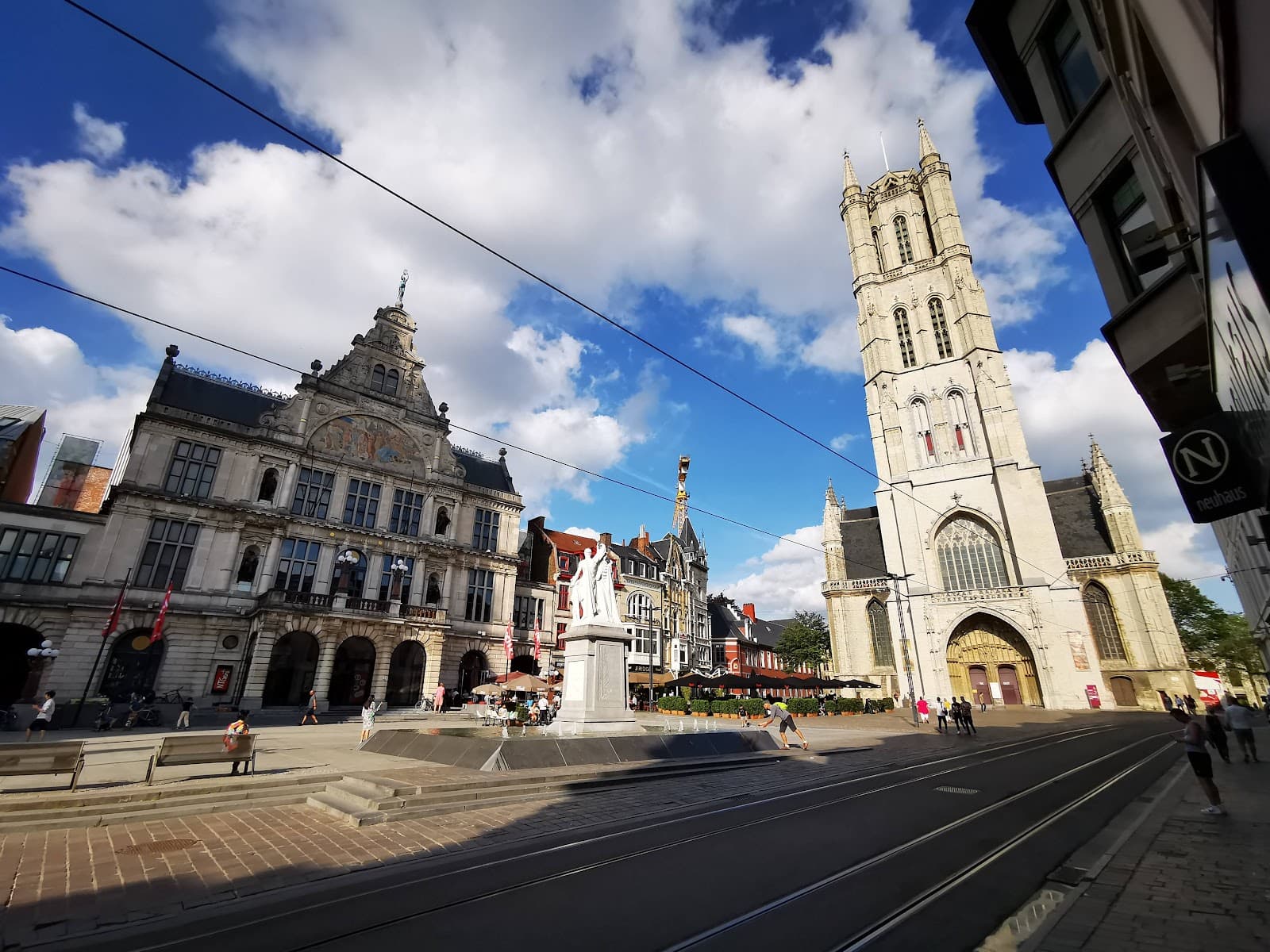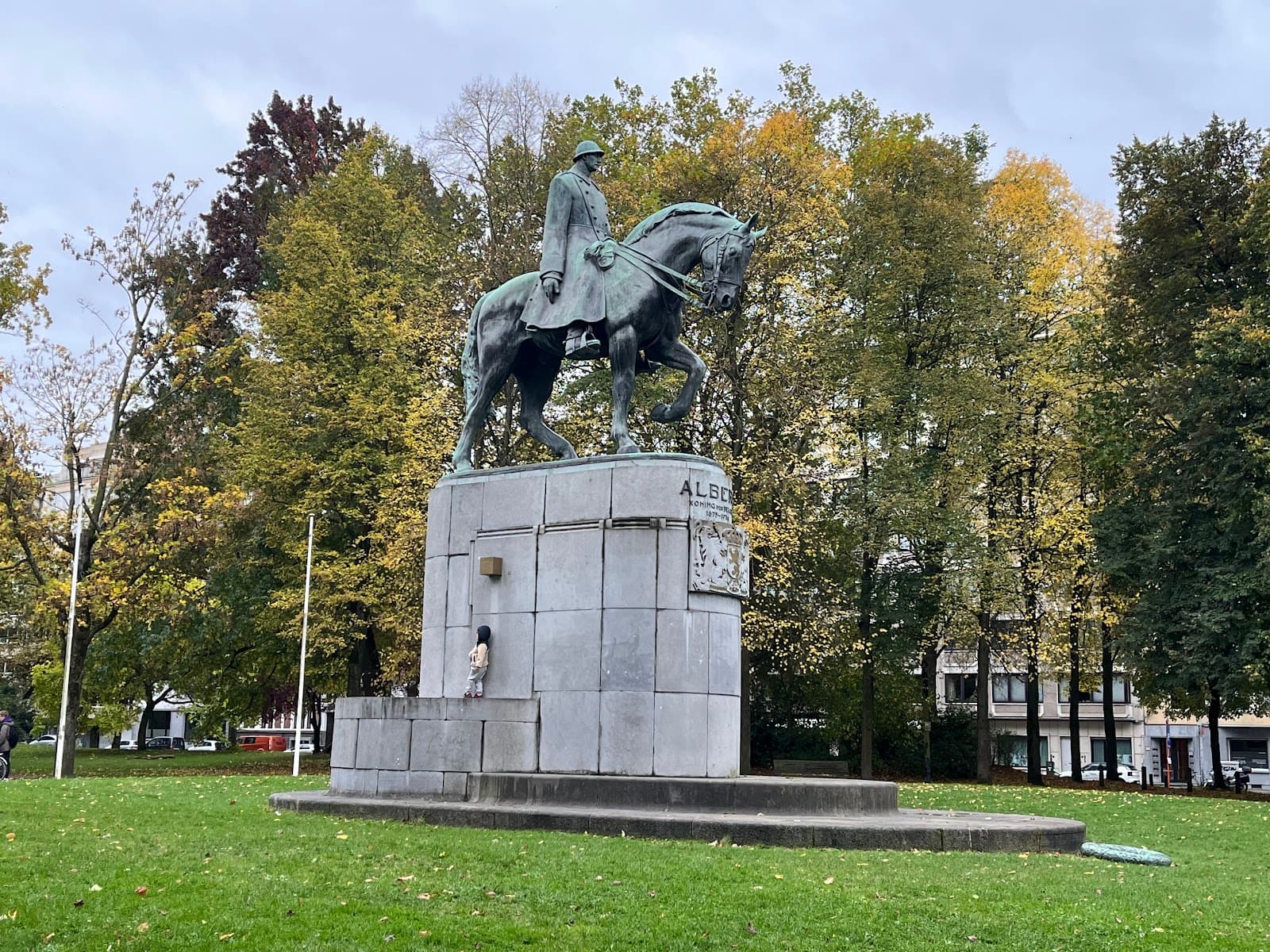
Mammelokker
A historic 18th-century building in Ghent, known for its unique name and a striking relief depicting a Roman legend of filial devotion.

Highlights
Must-see attractions

Social
From TikTok & Reddit
Best Time
Best light for photos

Mammelokker
Best Time
Best light for photos

Highlights
Must-see attractions
A historic 18th-century building in Ghent, known for its unique name and a striking relief depicting a Roman legend of filial devotion.
"A truly unique and memorable stop in Ghent, the Mammelokker's story and relief are fascinating!"

📸 Photo Opportunity
Capture the unique relief above the entrance; it's a memorable detail of Ghent's history. :camerawithflash:
📍 Location, Location!
Find it nestled between the Cloth Hall and the Belfry, a prime spot in Ghent's historic center. :world_map:

Highlights
Discover the most iconic attractions and experiences

The 'Mammelokker' Relief
Above the entrance
A 18th-century sculpture depicting the legend of Pero breastfeeding her starving father, Cimon.
Historic Architecture
Exterior
An 18th-century building, designed by David 't Kindt, leaning against the Cloth Hall and Belfry.
UNESCO World Heritage Site
Part of the Belfry complex
As part of the Belfry, it's recognized for its historical and cultural significance.
Plans like a pro.
Thinks like you
Planning Your Visit
A Unique Ghent Landmark
Understanding the Name
Best Times
Insider Tips
from TikTok, Instagram & Reddit
📸 Photo Opportunity
Capture the unique relief above the entrance; it's a memorable detail of Ghent's history. :camerawithflash:
📍 Location, Location!
Find it nestled between the Cloth Hall and the Belfry, a prime spot in Ghent's historic center. :world_map:
💡 Understand the Story
Learn the legend behind the name for a richer appreciation of this unusual landmark. :bulb:
🚶♂️ Explore Nearby
Combine your visit with the Belfry and Cloth Hall for a complete historical experience. :walking:
Tips: afternoon in Ghent
Tips
from all over the internet
📸 Photo Opportunity
Capture the unique relief above the entrance; it's a memorable detail of Ghent's history. :camerawithflash:
📍 Location, Location!
Find it nestled between the Cloth Hall and the Belfry, a prime spot in Ghent's historic center. :world_map:
💡 Understand the Story
Learn the legend behind the name for a richer appreciation of this unusual landmark. :bulb:
🚶♂️ Explore Nearby
Combine your visit with the Belfry and Cloth Hall for a complete historical experience. :walking:
What Travellers Say
Reviews Summary
Visitors find the Mammelokker a unique and historically significant landmark in Ghent, particularly noted for its intriguing name and the 18th-century relief depicting a Roman legend. Its central location next to the Belfry makes it an easy and memorable stop on any city tour.
"Georgous"
Serdar Demirler
"Great, intersting!"
Daniela Catana
"The building dates from the 18th century.
It was built according to a design by David 't Kindt.
It was originally the guard's house of the city prison, which was housed in the crypt of the cloth hall from the mid-18th century to the beginning of the 20th century.
The building leans against the cloth hall and the belfry.
Nowadays it functions as the office of the Ghent Ombudsman Service
The building owes its name "Mammelokker" to the relief above the tympanum.
It is a portrayal of the Roman story of Cimon and Pero.
In this legend, Pero saves her father Cimon, who was sentenced to starvation, by suckling him in prison.
"Mammelokker" comes from the Ghent dialect and literally means breast sucker. ("mamme" = breast and
"lure" = suck)
The monument has been protected since 1936 and, as part of the belfry, has been a UNESCO World Heritage Site since 1999."
Peter Van Renterghem
What People Like
What People Dislike
Frequently Asked Questions
🚇 🗺️ Getting There
The Mammelokker is centrally located in Ghent, Belgium, right next to the iconic Belfry and Cloth Hall. You can easily reach it by walking from Ghent's main squares like Sint-Baafsplein. If arriving by public transport, tram lines stop frequently near the city center, making it very accessible. :bus: :tram:
The Mammelokker itself is an exterior landmark, so it's accessible to everyone. However, it's situated in a historic area with cobblestone streets, which might pose challenges for those with mobility issues. :wheelchair:
Look for the Belfry tower; the Mammelokker is the small building directly adjacent to it, between the Belfry and the Cloth Hall. Its distinctive relief above the entrance is a clear identifier. :pushpin:
🎫 🎫 Tickets & Entry
No, the Mammelokker is an exterior landmark and can be viewed freely from the street. You don't need a ticket to see its facade and the relief above the entrance. :ticket:
As it's an exterior building, there are no specific opening hours. You can view it at any time of day or night. :clock1:
The Mammelokker currently functions as the office for the Ghent Ombudsman Service and is not open to the public for tours. You can only admire its exterior. :door:
🎫 🧭 Onsite Experience
The Mammelokker is famous for its unique name and the 18th-century relief above its entrance, which depicts a Roman legend of a daughter breastfeeding her imprisoned father. It's a distinctive piece of Ghent's historical art and architecture. :star:
Viewing the Mammelokker typically takes only a few minutes as it's an exterior landmark. However, you might spend longer if you're taking photos or reading about its history. :stopwatch:
Originally the guard's house for the city prison, the Mammelokker dates back to the 18th century and is part of the UNESCO World Heritage site that includes the Belfry and Cloth Hall. Its name and relief offer insight into historical societal norms and storytelling. :scroll:
Yes, the area around the Belfry and Cloth Hall offers many excellent photo opportunities. You can capture the Mammelokker's relief, its architectural details, and the grandiosity of the surrounding historic buildings. :camera:
📸 📸 Photography
Late afternoon or early morning light can be beautiful for photographing the Mammelokker's relief and architecture, offering softer shadows. However, it's a popular spot, so midday can also work if you focus on the details. :sunriseovermountains: :city_sunset:
Absolutely! The relief is the main attraction, and you can get quite close to capture its details. Just be mindful of other visitors. :iphone:
There are no specific restrictions on photography for the exterior of the Mammelokker. You are free to take pictures as a visitor. :camerawithflash:
For Different Travelers
Tailored advice for your travel style
👨👩👧 Families with Kids
🏛️ History Buffs
Deep Dives
In-depth insights and expert knowledge
The Story Behind the Name: Mammelokker
The relief itself, a significant piece of 18th-century sculpture, serves as a constant reminder of this ancient tale. It’s a key element that draws visitors and sparks curiosity about Ghent's historical narratives and artistic expressions. The building's original function as the guard's house for the city prison adds another layer to its historical context, placing it at the intersection of justice, punishment, and human drama.
Today, the Mammelokker stands as a protected monument and part of the UNESCO World Heritage site encompassing the Belfry and Cloth Hall. Its unique name and the story it represents make it a memorable and often discussed landmark, offering a glimpse into the more unusual aspects of historical art and local lore. It’s a testament to how art and architecture can preserve and convey stories across centuries.
Architectural Context and UNESCO Status
Its inclusion as part of the Belfry of Ghent, which was designated a UNESCO World Heritage Site in 1999, elevates the Mammelokker's status. This recognition underscores its importance not just as a standalone structure but as a component of a larger historical ensemble that represents medieval and Renaissance urban development. The UNESCO designation ensures that this area, including the Mammelokker, is preserved for its outstanding universal value, attracting global attention to Ghent's rich heritage.
Visitors often marvel at how this relatively small building fits so seamlessly into the grand historical panorama. The fact that it has been protected since 1936 further emphasizes its enduring architectural and historical significance. It serves as a tangible link to Ghent's past, offering a more intimate perspective on the city's evolution alongside its more celebrated monuments.






Social
from TikTok, Instagram & Reddit